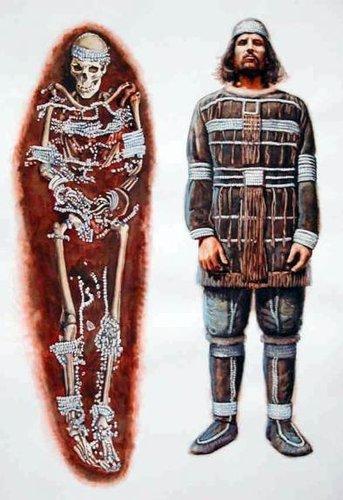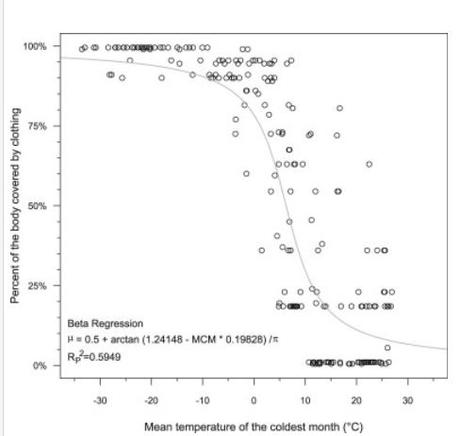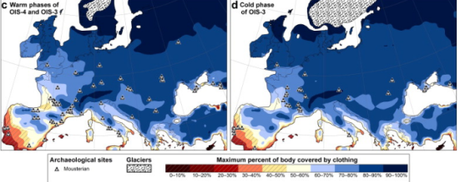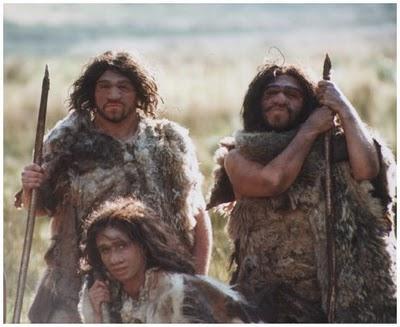 Neanderthals lived in Europe from ~400,000 years ago to ~28,000 years ago. During this time period the climate was difficult, with numerous ice ages and other dramatic climate shifts like Henrich events. Named after their discoverer, Hartmut Henrich, these are massive depositions of ice into the sea which can change direction of ocean currents. The gulf stream – which supplies Europe with warmth – in particular is vulnerable to these events prompting dramatic changes in the Earth’s climate. And there were over 40 Henrich events in the last 100,000 years alone!
Neanderthals lived in Europe from ~400,000 years ago to ~28,000 years ago. During this time period the climate was difficult, with numerous ice ages and other dramatic climate shifts like Henrich events. Named after their discoverer, Hartmut Henrich, these are massive depositions of ice into the sea which can change direction of ocean currents. The gulf stream – which supplies Europe with warmth – in particular is vulnerable to these events prompting dramatic changes in the Earth’s climate. And there were over 40 Henrich events in the last 100,000 years alone!

Bone beads threaded into clothing provide one of the few ways archaeologists can “see” what prehistoric attire looked like
As if that wasn’t bad enough the neanderthals also had to deal with the regular European climate. The human family evolved in Africa and the Europe was something new which neanderthals and Homo heidelbergensis - the neanderthals’ immediate ancestor – would have had to have adapt to. No doubt one of these many adaptations were technological, including the use of clothing. But just what was it neanderthals wore? Unfortunately clothes are rarely made from stone, bone or some other material which lasts for hundreds of thousands of years. Archaeologists are of little use here.
Instead, scientists have to try and infer what they wore by looking at modern hunter-gatherers. Whilst these people are obvious not neanderthals, they do provide a useful case study to see how people respond to a more natural environment than that you or I might be used to. In particular they can help show what factors influence clothing choices when it is your very life – not just your style – on the line. So Nathan Wales, of the University of Connecticut, poured over comprehensive data collected by the famous anthropologist Lewis Binford (coincidentally the same data I’m using in my dissertation) to try and investigate this issue.
The main issue here is that environmental variability is not the only factor which influences clothing choices by modern hunter-gatherers. Culture also plays a key role, with some items of clothing perhaps having a symbolic rather than a functional role. To try and circumvent this issue Wales analysed the clothes based on how much skin they covered rather than on precisely what they are. This also has the added advantage of providing a metric he could use to easily compare two different groups, allowing him to generate a complex statistical analysis of the hunter-gatherers’ clothes.
This analysis revealed that there was a fairly strong correlation between various environmental variables and percentage of the body covered. This would mean that we can use the detailed environmental data we have for the European climate during the time of neanderthals to predict how much of their body they covered with clothes. As if that wasn’t good enough, Wales also identified a correlation between various environmental variables and whether a specific part of the body was covered. In other words, we can also predict what the neanderthals were covering, as well as how much.

The relationship between clothing and temperature
However, before we can make such predictions we have to take into account the fact that the neanderthals had developed many adaptations for life at northern latitudes. They were short and squat, reducing their surface area so that it would loose less heat. They also had more muscle mass, which insulates better than fat. These adaptations mean we can’t take data for modern humans – who lack many of these changes – and use it to make predictions for neanderthals. Instead we have to first apply a correction factor to take into account how much better neanderthals were at retaining heat.
Luckily for Wales much research has been done into neanderthal energetics since it is a key area of research for scientists trying to work out why the neanderthals went extinct. Many of their adaptations would’ve required more energy to function. This would’ve put gracile humans at an advantage, particularly during warmer phases where neanderthals cold adaptations would be giving them no benefit. As such it was relatively easy for Wales to search through the existing literature on the subject and identify that neanderthals’ adaptations would have meant they could survive in temperatures 4 degrees c colder than modern humans.
So after correcting his models by 4 degrees, Wales calculated how much of their body neanderthals would have covered with clothing. The results of this model indicate that neanderthals would’ve had to have covered >80% of their body during the coldest periods, but only ~40% during milder times and for those living in downright pleasant environments – such as along the Mediterranean – they would’ve only had to have covered ~20% of their body. When plotted over Europe, the results look like this.

The annotation of this picture is pretty self-explanatory, so I’ll just add that “mousterian” refers to the toolkit produced by neanderthals.
He then ran his predictions of whether neanderthals would’ve covered their feet, hands and heads. These results indicate that neanderthals would more than likely have covered their hands in most of the environments they encountered, but would only have covered their heads in the coldest places. Finally, they would’ve likely have covered their feet most of the time. Finally, just to be sure of all of these predictions he ran his models for modern hunter-gatherers to see if they were reliable. He found that the resulting predictions were only ~10% off which is not bad at all. So these results are indeed reliable.

The most accurate depiction of neanderthal clothing I could find in google images
Although this certainly is interesting, revealing a lot about neanderthal clothing, can we get more specific about what they wore? Archaeology may finally be have use here, showing that neanderthals did not produce complex technology needed to sew or stitch clothes together to create well fitting garments. Further, anatomical evidence suggests that neanderthals were not wearing high quality shoes which provided them with grip or traction. Instead it would seem that they wrapped their feet in skins or made other simple shoes.
In short, neanderthals covered most of their body in cold environments, less so during the warm. They often wore gloves and shoes, but only wore hats during the coldest times. However, these clothes were likely just simple furs or skins, tied or just draped over their body. They lacked the technology to produce tight fitting tailored clothes, like the kind modern humans wore.
Wales N (2012). Modeling Neanderthal clothing using ethnographic analogues. Journal of human evolution PMID: 23084621

